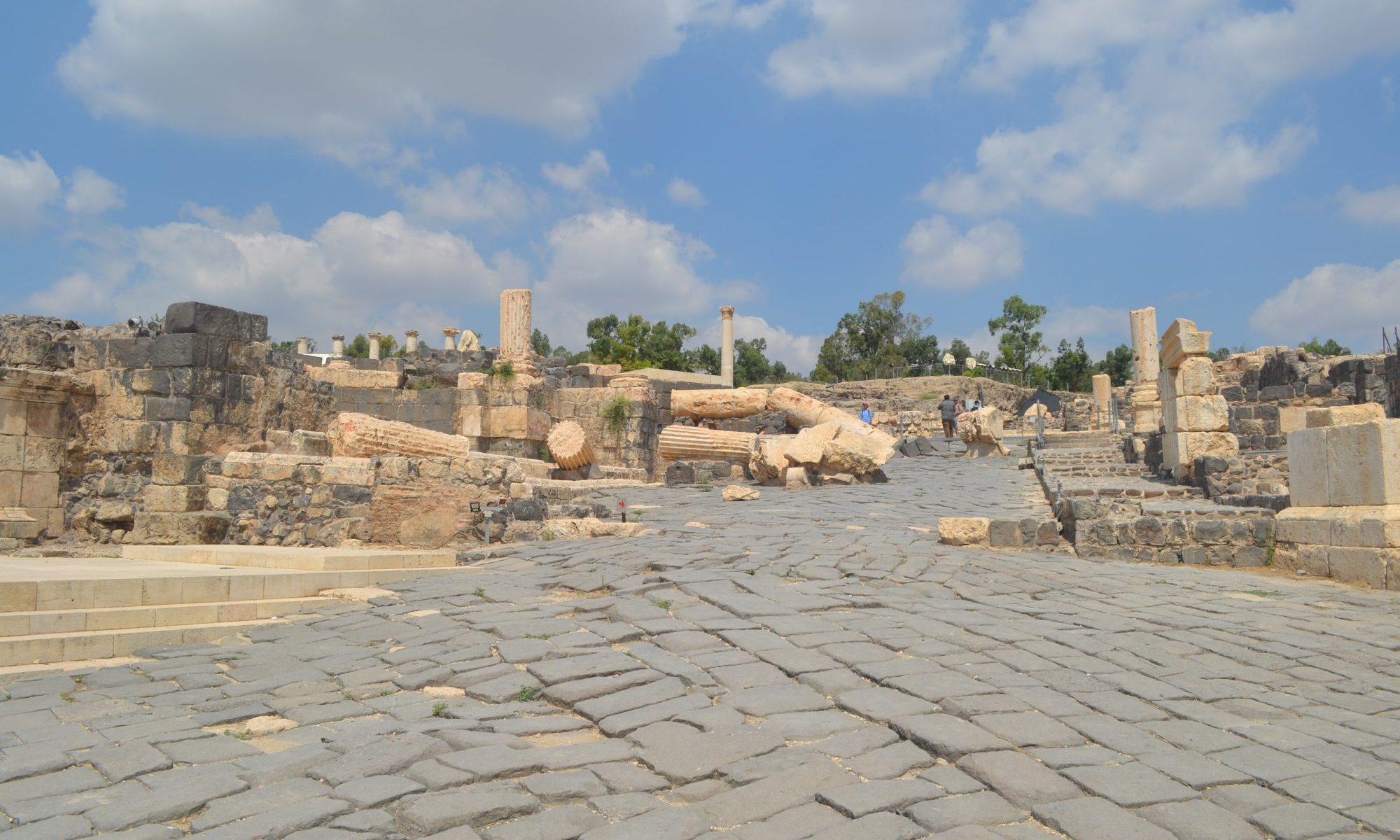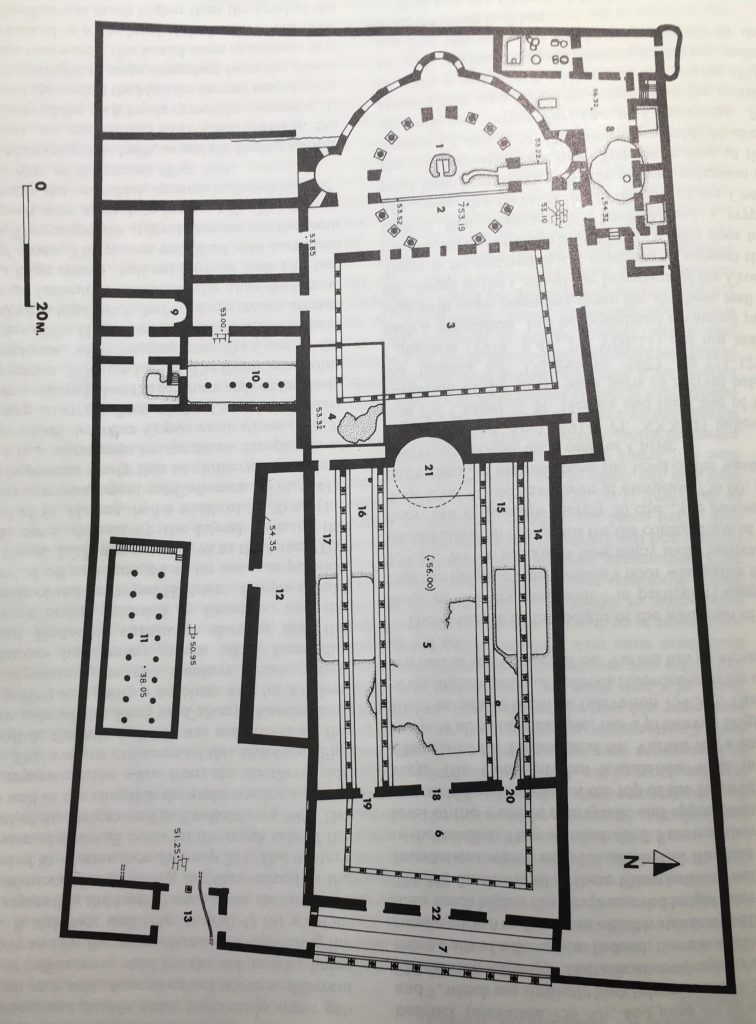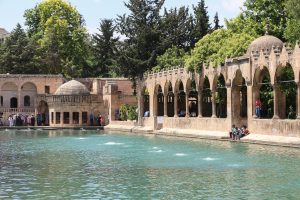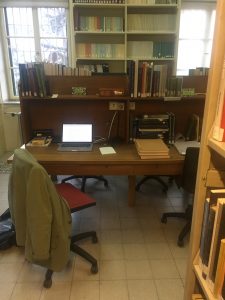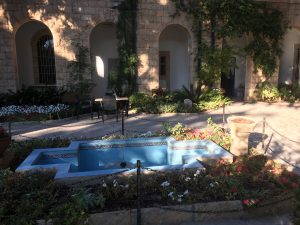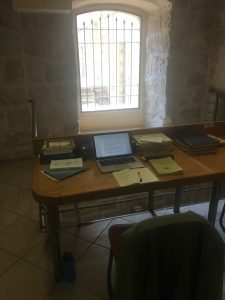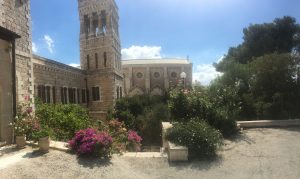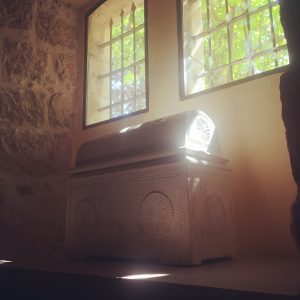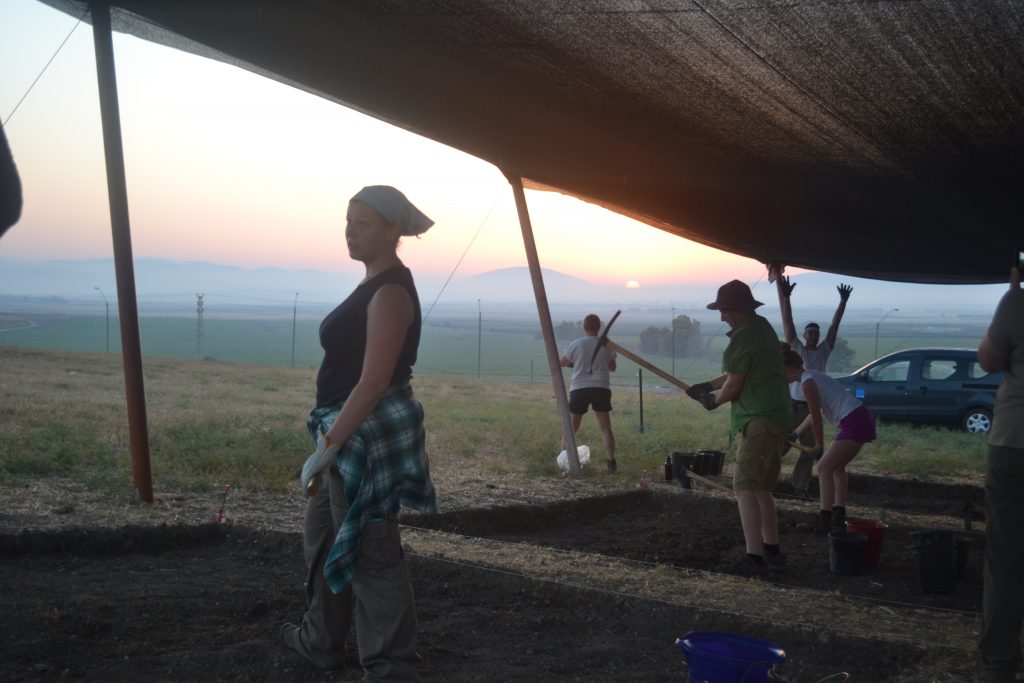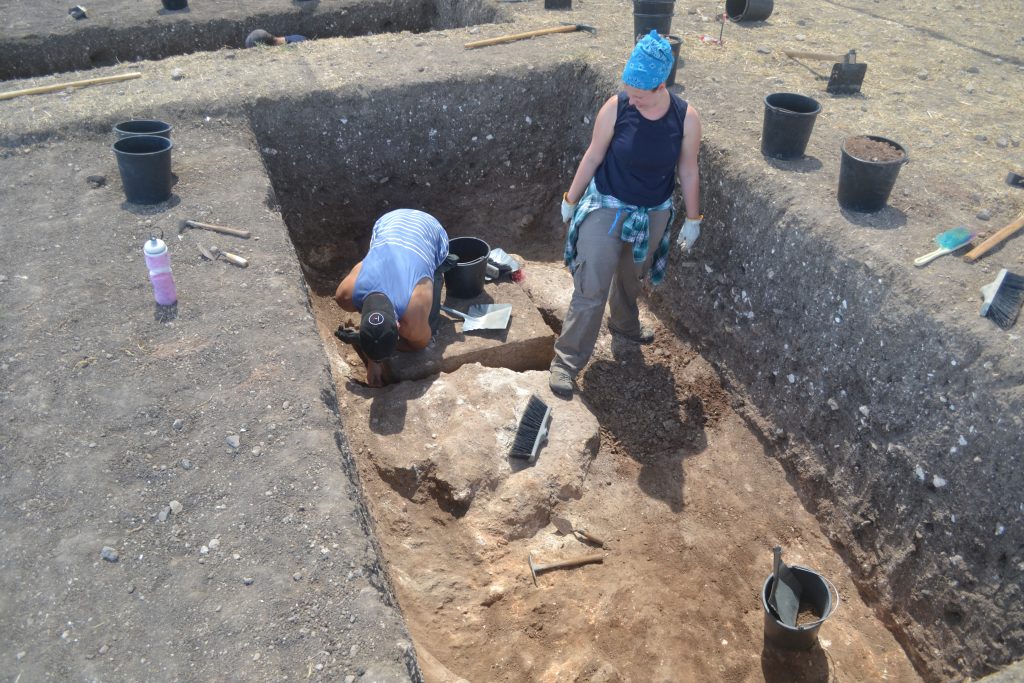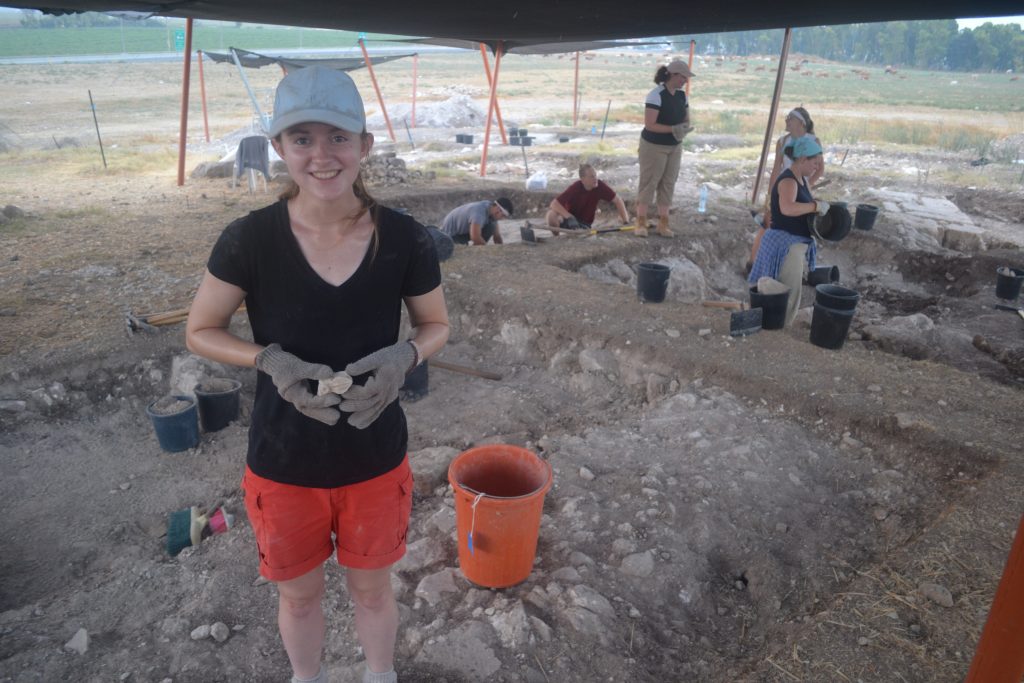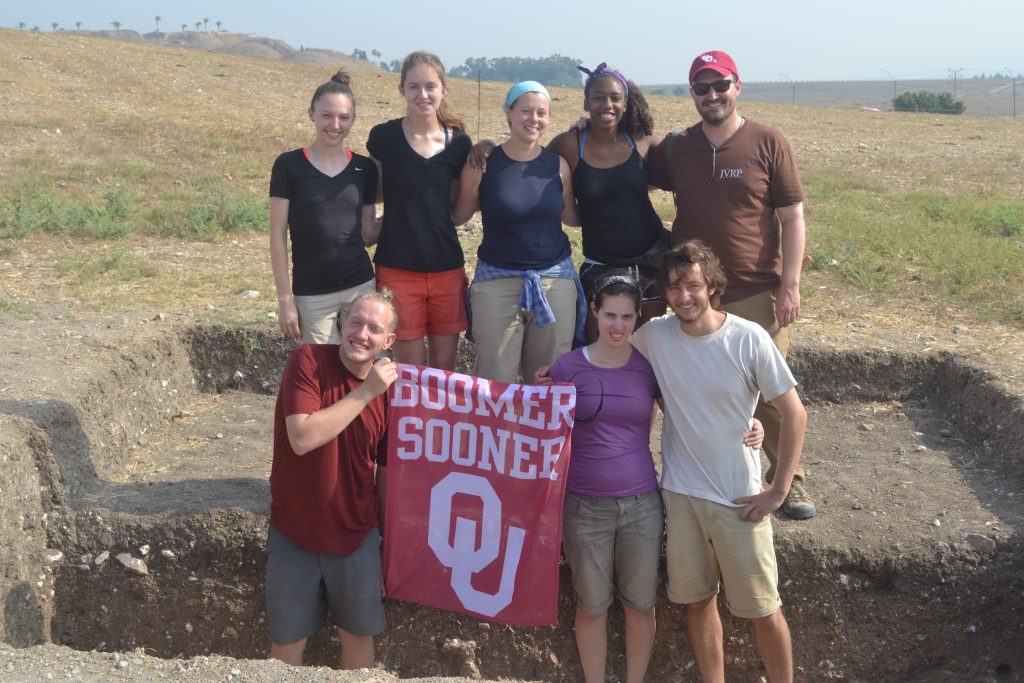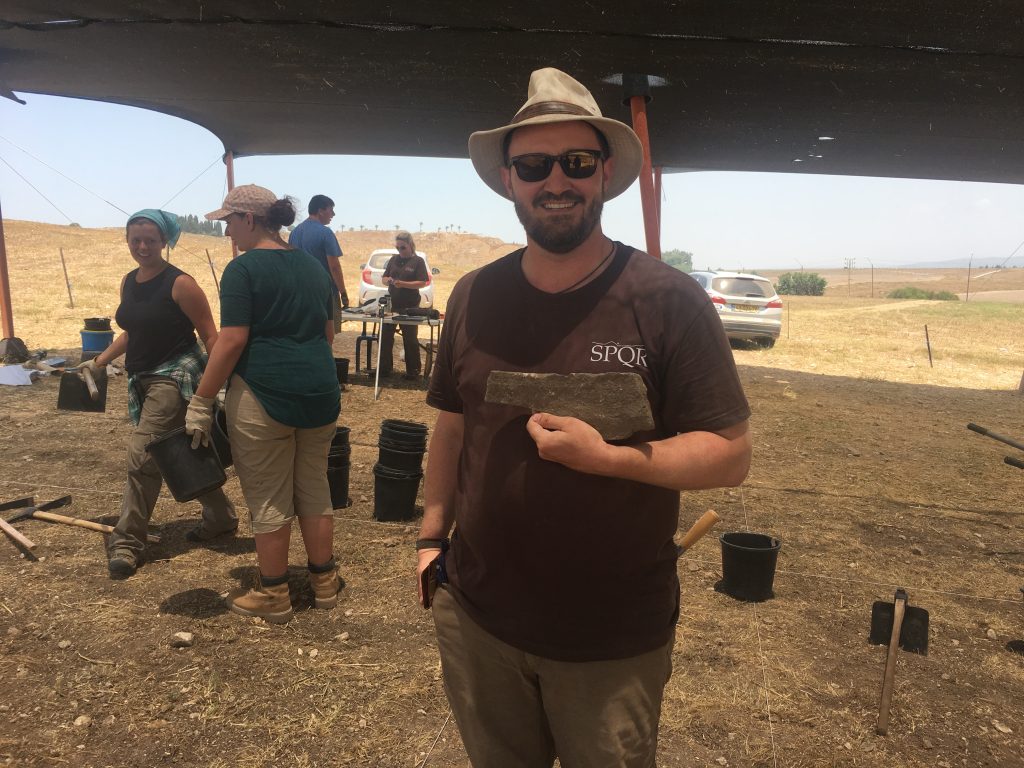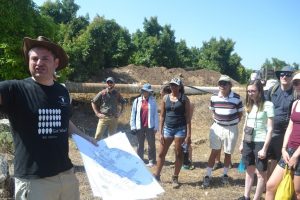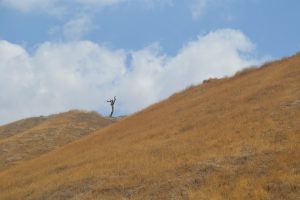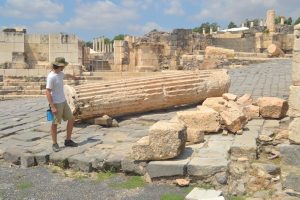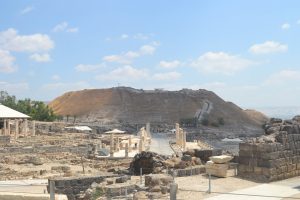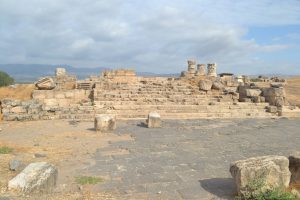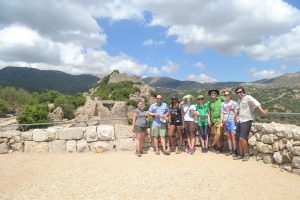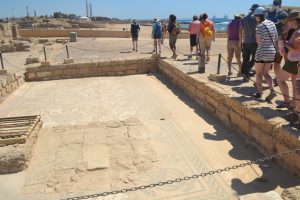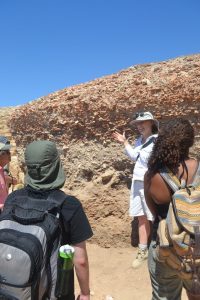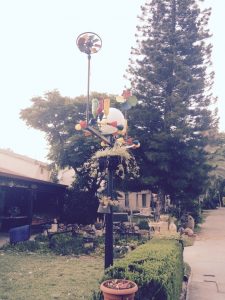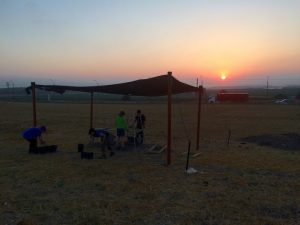As followers of my research (and blog and tweets) will know, I’m currently working on a book project that examines the economics of pilgrimage in late antiquity. One form of economic activity related to pilgrimage was the production, exchange, and movement of pilgrimage souvenirs. In the process of researching, cataloging, and mapping such souvenirs, I came across one with an inscription that I think provides some insight into how Greek-speaking pilgrims referred to themselves and how they used their souvenirs. I provide here some preliminary thoughts before more formal publication.
First, perhaps, a few words about why it is difficulty to know what pilgrims called themselves in late antiquity. One of the peculiarities of studying pilgrimage in the late Roman and early Byzantine periods is that when using words like “pilgrim” and “pilgrimage” we are anachronistically using terms that describe an identity and ritual that did not have specific terminology in late antiquity. The Latin peregrinus, from which the English word pilgrim descends, can describe a religiously motivated traveller, but it can also describe other sorts of travelers or wanderers. In addition, it is not clear that pilgrims would have used peregrinus to describe themselves (Maraval 2002:63-64).
The lack of clarity concering what pilgrims would have called themselves is not entirely due to a lack of sources surviving from antiquity. There are three first-person narratives of travek to the Holy Land from the late antique period. There are others sources as well, like Theodosius’ text and the Breviarius, but they are very short and don’t provide much information about the journey or the pilgrim — although they have some useful details about the holy sites. There are also some third person narratives, like Jerome’s Encomium of Paula, but they also don’t tell us what pilgrims called themselves. Jerome occasionally uses the word peregrinus, but it’s not specific to Paula or pilgrims, and it’s not clear that Jerome uses the word to refer to religiously motivated travel, in the way English speakers use the word “pilgrim” today. The most famous of the first-person narratives is that of Egeria. She traveled from western Europe to the Holy Land in 381-3 and is the most specific about what she is up to. She famously describes herself as traveling “for the sake of prayer” gratia orationis (13.2, 17.1) in a narrative epistle written from Constantinople to her “sisters” back home. A slightly earlier text, by an anonymous traveller from Bordeaux, from the 330s, has left us a detailed itinerary for travel from Europe to Palestine and back, with important details about Jewish and Christian (and a few other) holy places. However, he leaves the reader to infer what his purpose was. He nowhere gives himself a title like peregrinus. The richly detailed narrative written by the Piacenza Pilgrim about 570, likewise, does not use the term peregrinus nor does he describe his journey as a peregrinatio, pilgrimage, although it is clear his motivation is to see and experience the holy land with all of his senses (for discussion, see Johnson, DOP 70, 2016).
Another peculiarity of pilgrimage narratives is that they survive exclusively in Latin, even though other literary sources and material culture (such as pilgrimage souvenirs with Greek inscriptions) indicate that Greek-speaking pilgrims travelled to the Holy Land as well. Thus, with the question of what Greek pilgrims called themselves we would seem to be at a double loss — the surviving first-person narratives are in Latin, and the Latin word peregrinus doesn’t exclusively mean “pilgrim.” The problem of what Greek pilgrims called themselves has been explored in a short essay by Cyril Mango (1995:1-3), who pointed out the interesting fact that Greek pilgrims in the early modern period adopted the term hadji from the Ottomans — using it to describe Christians traveling to the Holy Land — before dropping it for the more acceptably Greek proskynetes. Mango also points out that the Greek word for stranger or traveller, xenos, (pl: xenoi) had much the same problem that the Latin peregrinus had — that it could describe any traveller, not necessarily a “pilgrim.” He notes a 12th century Greek source that describes pilgrims by by the cumbersome phrase “those who travel in foreign parts [xeniteuon, a verbal form of xenos] for the sake of Christ” which suggests that even by the later middle ages, xenos did not uniquely signal “pilgrim.” So, how did “those who travel(ed) in foreign parts for the sake of Christ” refer to themselves when they did not want to use such a cumbersome phrase?
An ampulla excavated at Sardis in 1994-95 suggests one answer. The image below, from Greenwalt and Rautman’s 1998 publication (AJA 102:465-505, fig. 13) is of an ampulla of the Asia Minor type, a form often associated with Ephesus and usually dated to the 6th-7th centuries (Examples in Vikan 2010:34-36).

Such objects are usually interpreted as pilgrimage souvenirs that could be used to hold holy oil or other materials from a saint’s shrine or similar holy place. The iconography is singular for such an object. One side of the ampulla, the lower one in the image, features John the Baptist and an incised inscription that reads, ΑΓΙΕ ΙΟΑΝΝΗ ΒΑ(ΠΤΙϹΤΑ), a vocative invocation that can be awkwardly translated as “O Holy John [the] Ba[ptist]!” The other side, the upper image in the photo, is the more interesting for our purposes. It depicts the Virgin and Child and has an incised Greek inscription that Greenwalt and Rautman read as ΒΟΕΙΘΕ Τ(Ο)ΥϹ ΞΕΝ(Ο)ΥϹ “Help the Travellers!” which may, given that it is inscribed on a probable pilgrimage souvenir be better translated as “Help the Pilgrims!” If that it the case, then the ampulla presents epigraphic evidence for what pilgrims called themselves. The vessel is only 7.3 cm. tall. So, it could have easily been worn to work its protective powers as an amulet (on that topic, see Cline 2019 on my CV). It’s also worth noting that both inscriptions are incised and are not part of the mold that produced the image on the ampulla. Perhaps the creator of the object could incise the “Help the travellers/pilgrims” inscription for pilgrims and travelers in need of aid, while others might prefer to ask the Virgin for something else.
